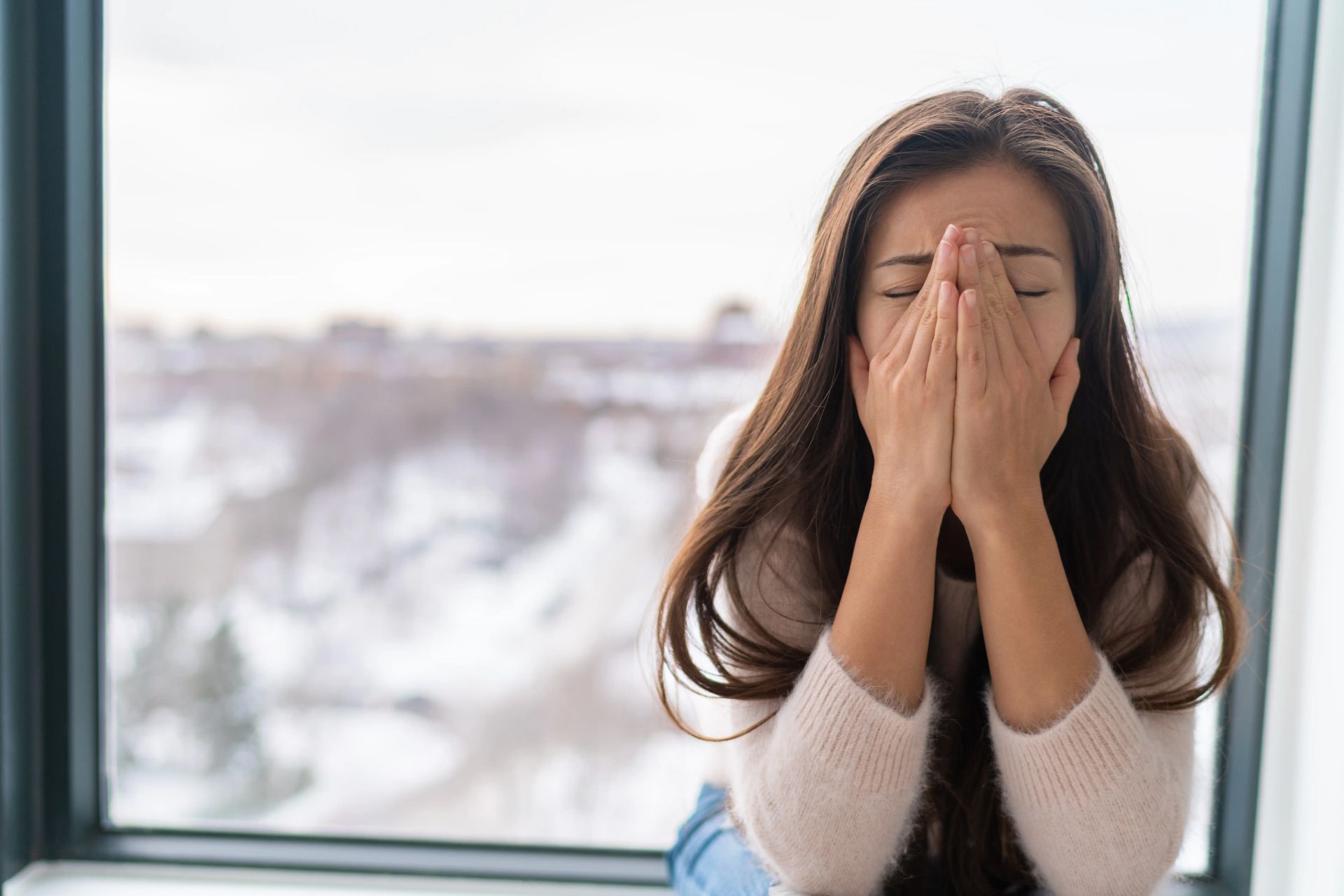Breathing Through the Storm: My Go-To Yoga Breathing Techniques for Anxiety and Stress
If there’s one thing nursing has taught me, it’s that anxiety has a way of stealing people’s breath. I’ve sat with patients who whispered, “I can’t breathe” while their oxygen levels were perfectly fine. What they were really describing was the tight grip of panic. That stuck with me. Because even before I began my journey to become a Psychiatric Mental Health Nurse Practitioner (PMHNP), I understood how scary that feeling is. Anxiety makes the body feel unsafe, even when you are safe. And often, the breath is the first place it shows up.
Stress and anxiety fire up the body’s fight-or-flight system. Your heart races, your muscles tense, and your breathing gets shallow and fast. This is great if you’re running from danger, but terrible if you’re just trying to sleep, focus, or get through a workday. I’ve found that breathing techniques, especially from yoga (what’s called pranayama), help flip the switch back toward calm. Slow, intentional breathing activates the parasympathetic nervous system the part that tells the body it’s okay to rest and recover (Orun,2021.)
This isn’t just a feel-good idea. Research shows slow, paced breathing lowers cortisol, improves heart rate variability, and even eases symptoms of anxiety and depression. Stress in daily life could cause physical, emotional, behavioral, and psychological problems as well as chronic illness. Therefore, it is very important for individuals to learn how to live with stress, and to know how to manage the stress to minimize its negative effects (Orun,2021.) For me, the simplicity is what makes it so powerful you don’t need a therapist’s office, equipment, or even much time. You just need your lungs. Breathing practices’ effects on the autonomic nervous system and brain may underlie their stress-reducing benefits. Effective breathing interventions support greater parasympathetic tone, which can counterbalance the high sympathetic activity intrinsic to stress and anxiety. Respiratory entrainment of brain rhythms offers an additional avenue through which breathing may influence neural circuit dynamics, cognition, and mood. Breathing also uniquely engages in a reciprocal relationship with stress and anxiety, whereby stress and anxiety can both affect be affected by altered respiratory patterns (Bentley, 2023.)
There are dozens of ways to practice yoga breathing, but these are the ones I come back to both in my own life and in how I imagine introducing them to future clients.
Diaphragmatic Breathing (Belly Breathing)
How to do it:
- Place one hand on your chest, one on your belly.
- Inhale slowly through your nose, letting the belly rise more than the chest.
- Exhale gently and fully.
Why it helps :
- Trains the body to breathe deeply instead of shallowly.
- Improves oxygen exchange and lowers anxiety.
When to use it :
Before bed when the mind is racing. Diaphragmatic breathing brings a sense of security.
4-7-8 Breathing
How to do it:
- Inhale for 4 counts.
- Hold the breath for 7 counts.
- Exhale slowly for 8 counts.
Why it helps :
- The long exhale slows heart rate and reduces nervous system arousal.
- Helpful for panic or trouble falling asleep
When to use it :
Throughout the day when facing difficult challenges.
4-7-8 Breathing
How to do it:
- Inhale for 4 counts.
- Hold for 4 counts.
- Exhale for 4 counts.
- Hold for 4 counts.
Why it helps :
- Adds structure and focus.
- Can be done anywhere also an efficient technique during a panic attack.
When to use it :
when you’re feeling overwhelmed, stressed or anxious
I think about how overwhelming life feels for many people who walk into a clinic. They may not have access to regular therapy, or they might be hesitant about medication. But almost everyone can try a breathing practice. Of course, breathwork is not a cure-all. It doesn’t replace therapy or medication when those are needed. But it’s a free accessible practice that puts some control back into the client’s hands. One of my ICU patients once told me, after I guided her through slow breathing, “I finally feel like I can breathe again.” That moment reminded me: sometimes healing isn’t about big interventions. Sometimes it’s about helping someone rediscover something they already carry within them. That’s why I’m passionate about bringing breathwork into mental health care. It’s science-backed, yes but it’s also deeply human. We all breathe, but not all breaths are created equal. Anxiety makes us breathe shallow and fast. Yoga teaches us how to breathe deep and slow. That difference can shift the body from chaos to calm. For me, these practices aren’t just “techniques.” They’re anchors. They’ve helped me through stressful days as a nurse and long nights as a student. And I believe they can help my future clients feel a little more grounded when the storm of anxiety rolls in. If you’ve never tried breathwork before, start with just one minute of slow belly breathing today. It might feel simple, but simple doesn’t mean small. Sometimes, it’s the small things that make the biggest difference. The advantage of all these breathing tools is that they can be used on demand. You can practice them anytime and anywhere. They help to moderate the fight, flight, or freeze response and feelings of anxiety. You can use them prior to a stressful event such as giving a presentation or having dental work. Use them to center yourself when you may need to switch your focus such as transitioning from a difficult meeting to patient care (Myerholtz,2023.)
Chief Preceptor of Clinical Practicum Program – Dr. Okah Anyokwu
Director of Clinical Practicum Program – Xavier Hicks











